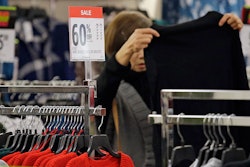
 Charles Thomas
Charles ThomasAnti-bribery and corruption (ABC) compliance can seem like a burden. Multi-national corporations with complex and extensive supply chains consisting of thousands of manufacturers, suppliers, agents, distributors and more can struggle to keep track of who they are dealing with — and whether any of those third parties present a higher risk, or are engaged in unethical or illegal behavior.
Failure to comply with regulations on third-parties can put corporations at risk of penalties, as well as cause disruption in their supply chains. It can cost a business millions of dollar for every hour of lost production time. By adopting recent advances in technology that make it easier for corporations to understand and monitor third-party relationships, manufacturers can guard against these risks of non-compliance.
Supply Chain Pinch-Points are Most Vulnerable
For corporations, knowing who your manufacturers are isn’t just useful to ensure compliance — it is also valuable tool in preventing costly delays in your supply chain.
The manufacturing sector’s pinch-point is between the raw materials and the expensive end-value products, where there is pressure from both upstream and downstream in the supply chain. This means that a breakdown in either upstream or downstream supply chain will negatively impact your productivity and could cost millions for every hour that there are delays.
Performing an accurate risk assessment of whether a manufacturer is a solid, stable, reputable business, protects your company from a breakdown in the supply chain. Do they have any environmental or social risks, such as human trafficking or child slavery? Has the corporation gone through a bankruptcy? Are the owners on lists of sanctioned individuals?
Conducting due diligence on your supply chain enables you to know the answer to these questions, and protect against the risks that an unreliable, unstable or disreputable manufacturer could pose to your reputation and bottom-line.
Monitoring Third-Party Manufacturers
ABC compliance on your supply chain is almost impossible without some kind of automation. For instance, a large retailer with thousands of suppliers did not know where all its clothes, shoes and jewelry were being produced. A manual internet search on each of these manufacturers could take upwards of 4,000 hours in total, and still might not be fully compliant with anti-bribery and corruption legislation, as not all the information would necessarily be available.
Instead, by using advanced screening and matching technology, as well as machine learning algorithms, corporations can more easily conduct due diligence on large volumes of third-party relationships.
First, a corporation needs to verify the identities of the third-party manufacturers it is working with. There might be hundreds of companies out there called “AA Steel,” but by using statistically-based linking technology, it is possible to match manufacturers to public records.
Once the identities of its third-party manufacturers have been verified, automated searches of global criminal, state ownership and Politically Exposed Persons (PEP) databases can flag if an entity in the supply chain is connected to someone who poses a greater risk of corruption and bribery.
It also provides a way to access to further information about the reliability of a supplier — maybe a manufacturer has a previous bankruptcy in their name, or if has indicted for fraud, which could say something about their stability and reputation. Obtaining this information using manual processes would be difficult and time-consuming for numerous suppliers, particularly across different jurisdictions.
One of the other key sources a corporation can use to monitor third parties is the media. News is a valuable resource; as open-source data, which is readily available globally.
Through use of machine learning algorithms, global media sources can be used to monitor the behavior and actions of third-party suppliers based on key phrases or words. For instance, if a particular manufacturer is mentioned in the same article as the phrase “human trafficking,” being able to identify it as a positive reference, such as their commitment to compliance, or a negative mention where they’ve been implicated, is important to enable companies to identify potential red flags, while eliminating “noise” in the due diligence process. Previously, U.S. regulators have criticized financial institutions for failing to identify fraudulent or corrupt behavior even when it was openly reported in trade publications.
The Future of Compliance
As anti-bribery and corruption legislation becomes more stringent and is more effectively enforced by more countries, technology will increasingly become a powerful tool in compliance. By accessing global databases and news sources, and filtering information using screening technology and machine learning algorithms, companies can identify bribery and corruption risks within their manufacturing supply chains. This is quicker, cost-effective and more comprehensive than manual methods. For corporations looking to gain a deeper understanding of their third-party relationships, this advanced technology should be a crucial aspect of their anti-bribery and corruption compliance program.
Charles Thomas is Director of Anti-Bribery & Corruption for LexisNexis Risk Solutions.



















